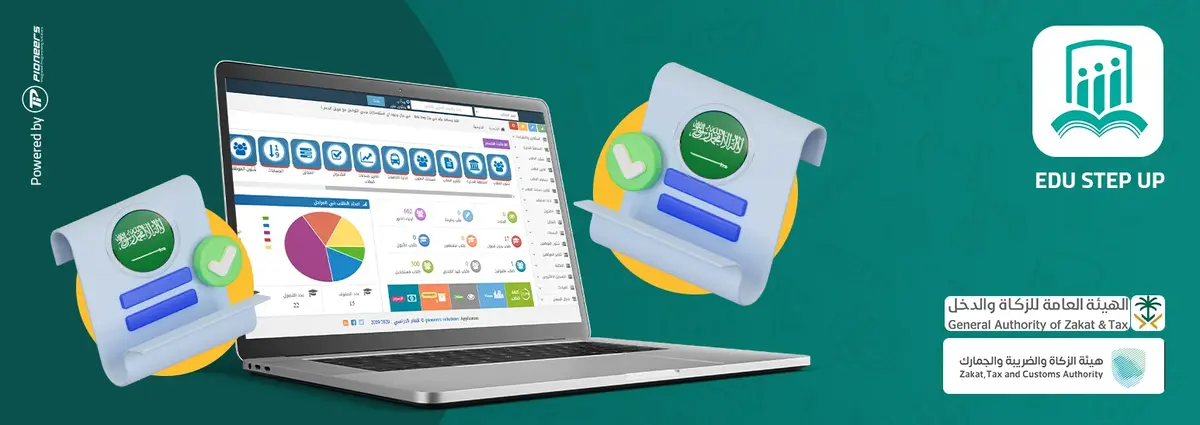
Mon 2021/12/20
chart of accounts for International School in the Edu Step Up system
chart of accounts: or the chart of accounts, which is a list of all the accounts in the company or a watch organization, in which the accounting financial transactions are recorded, the foundations for establishing the accounting system.
Undoubtedly, the first thing that reflects the work of the financial management is the chart of accounts, or what some call the accounting guide, it is about giving and specifying a specific number for each account, and the division of the chart of accounts differs from one school to another, each main account consists of several levels of sub-accounts. It is considered the first step in designing any accounting system, regardless of the degree of complexity or the way in which the system is implemented.
Definition of the chart of accounts
It is a group of accounts that are used in the general ledger of the school or organization and are used by an accounting program and are classified according to the account number in order to facilitate the identification of a specific account. It begins with assets and liabilities and ends with expenses and revenues. Many school administrations structure their accounting guide so that expenses or (expenses) are collected separately from the relevant department. each department of the school has the same set of expense accounts, where the accounts are categorized as follows it is also considered the ideal classification of the types of accounts in the chart of accounts or the accounting guide
Classification of the chart of accounts:
1- Asset
divided into:
- Fixed assets:
Lands - buildings - cars - furniture
Variable assets:
Banks - notes receivable - inventory - debtors
2- liabilities:
- Accounts Payable
- liabilities payable
- Taxes payable
- Wages payable
- outstanding bonds
3- owner’s equity
Capital - personal withdrawals - school owner's equity - reserves - retained earnings.
4- revenues
revenue and income - sales revenue
5- expenses
taxes and wages expenses - suppliers’ expenses - Depreciation expenses
or in other order
Sales cost:
Purchases - Purchases expenses - Purchase returns Discount on purchases
Selling and marketing expenses:
- Advertising expenses
- General and administrative expenses:
Salaries - maintenance - phones - internet - electricity
What is the benefit of the chart of accounts?
- The chart of accounts is the cornerstone of your system, especially if you depend on an accounting program for total dependence on the chart of accounts, and there is no restriction that is directed manually or on Excel or any program for general accounts unless these accounts already exist.
- Designing the chart of accounts takes a lot of time and effort from the financial team in the beginning, but then it is easy to add or delete any account.
- It is considered the best way to organize accounting data procedures, whether using an accounting program or manually recording.
- It helps in recording and saving certain items and inputs and following them up automatically or manually. It is also characterized by the possibility of modifying and adjusting them according to the structure of the accounts of the school.
Example to understand the chart of accounts:
The chart of accounts provides you with an understandable, organized and easy way to organize the accounting work. Accountants must remember the most frequently used account numbers at least while recording accounting transactions in digital accounting systems.
Where one or more sub-accounts are branched from each main account that takes its own sub-numbers. Before we show the example, let's remember together the basic accounts, which are:
- assets
- liabilities
- owner’s equity
- Revenues
- Expenses
if
1 Asset account, from which the following sub-accounts are branched:
101 Furniture
102 cars
103 buildings
For the sake of accuracy in the work, each account in the chart of accounts must have an identification number, a name and a brief description. By reading the identification number, it is possible to know if the account is a primary or a subsidiary, and to which account it belongs.
EdU Step Up Chart of Accounts
The Edu Step Up system provides you with a dynamic, non-static chart of accounts, meaning you can modify or delete it as you want, in addition to creating a new account.
The chart in the program is divided into 6 levels, the first 5 levels are main levels and the last level is a sub-level, and the chart in the program is divided into:
- assets
- liabilities and owner’s equity
- Expenses
- Revenues
In addition to the possibility of adding an opening balance to this account on a page on the program in the name of the opening balance, through which you can add an opening balance to the accounts.
Therefore, if you are an accountant at an international school, a language school, or a private school, you must take good care of designing and structuring your school’s chart of accounts to ensure the organization of your school’s public accounts.
Leave Comment















Comments